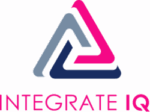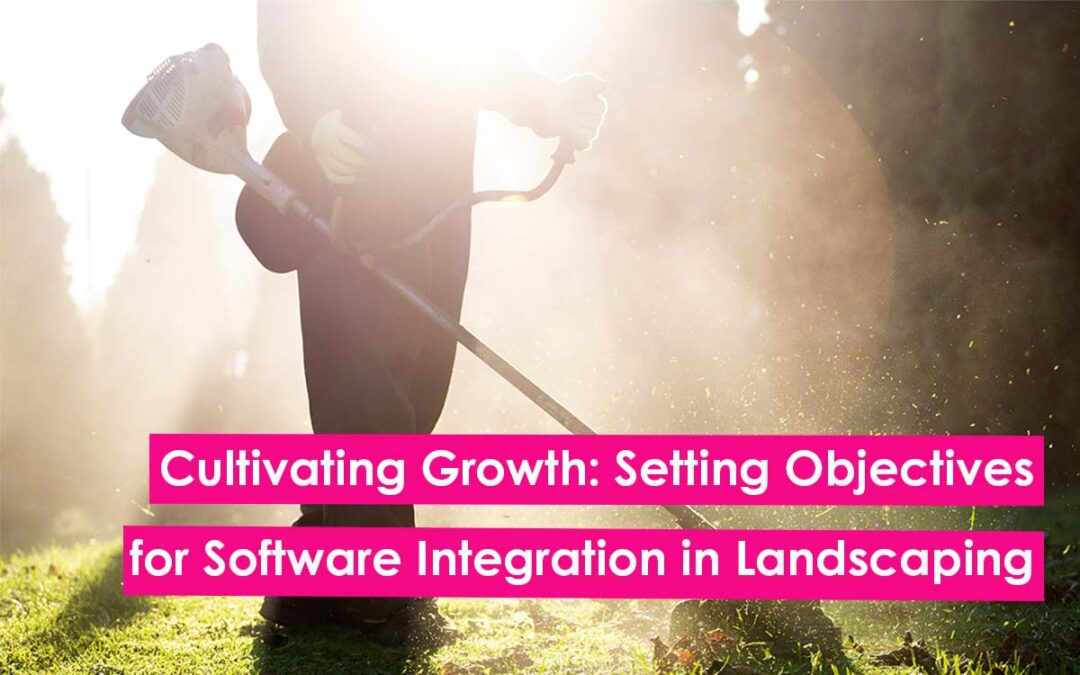Landscaping businesses – like meticulously maintained flowerbeds – require constant attention and strategic planning to truly flourish. While your green thumbs might work wonders on lawns and shrubbery, optimizing internal processes is another facet of growth that demands careful consideration. Enter system integration, a transformative tool that can propel your landscaping business to new heights.
But before you dive headfirst into software solutions, remember: even the most vibrant blooms need clear direction to reach their full potential. That’s where defining your integration objectives comes in.
This blog post is your guide to cultivating clear goals for your landscaping business integration, ensuring it blossoms into a productive hub of improved efficiency and customer satisfaction.
Planting the Seeds: Understanding Integration’s Potential
Think of your landscaping business as a vibrant ecosystem. Different departments – from sales and design to scheduling and accounts – play interdependent roles. Just like in nature, when these elements function in harmony, your business thrives. System integration acts as the fertile soil for this cooperation, seamlessly streamlining the exchange of information from best in class systems between departments.
So, what fruits can this digital orchard bear?
- Efficiency blooms: Automated workflows handle repetitive tasks, freeing up your team to focus on what truly matters – creating beautiful landscapes and nurturing client relationships.
- Customer satisfaction blossoms: Integrated systems facilitate smoother communication, faster response times, and proactive service – leaving your clients with a smile they can’t wipe off their faces.
- Financial well-being flourishes: Reduced operational costs due to improved efficiency, enhanced revenue generation through better customer segmentation and sales management, and streamlined invoicing contribute to a bountiful financial harvest.
Nurturing Growth: Defining Your Integration Objectives
Now that you’ve glimpsed the potential of integration, it’s time to get down to the real work – setting clear objectives. Remember, a poorly defined goal is like a parched seedling in the scorching sun – it’s unlikely to blossom.
Here are some key areas to focus on when setting your integration objectives:
- Financial Well-being:
- Boost project profitability: Track project costs and resource allocation in real-time, identify areas for improvement, and make data-driven decisions to optimize pricing and service offerings.
- Maximize revenue generation: Leverage best in class sales and marketing tools to generate qualified leads, nurture lead conversion rates, and develop targeted marketing campaigns for specific customer segments.
- Improve cash flow: Automate invoicing, payment processing, and customer follow-up; offer recurring service plans, and implement credit card authorization for quicker payments.
- Operational Efficiency:
- Streamline scheduling and dispatch: Aim for automated appointment scheduling, crew dispatch based on location and skillset, and real-time job updates for both teams and clients.
- Reduce paperwork and errors: Integrate data across systems to eliminate manual data entry, minimize human error, and improve invoice accuracy.
- Optimize inventory management: Track equipment and materials usage in real-time, set up automated re-ordering based on pre-defined levels, and reduce waste and unnecessary purchases.
- Customer Satisfaction:
- Enhance communication: Enable easy online appointment booking, facilitate two-way communication through integrated messaging platforms like Message IQ, and provide clients with real-time project updates and progress reports with tools like Status IQ.
- Personalize the experience: Integrate customer data from CRM systems to offer personalized recommendations, targeted promotions, and proactive service based on individual needs.
- Simplify payments: Incorporate online payment options, eliminate manual invoicing, and offer flexible payment plans to make the financial aspect of landscaping a breeze for your clients.
Harvesting the Rewards: Taking Action
With your objectives clearly defined, it’s time to transform them into action. Here are some tips to get you started:
- Seek expert guidance: Partner with an experienced system integration provider who understands the unique needs of the landscaping industry.
- Prioritize your needs: Don’t try to integrate everything at once. Start with your most pressing pain points and prioritize objectives that offer the most immediate impact.
- Invest in training: Ensure your team is on board with the new system by providing comprehensive training and ongoing support.
- Measure and adapt: Regularly assess the performance of your integrated system against your defined objectives. Be prepared to adapt and refine your approach based on the data you gather.
Ready to Watch Your Business Bloom?
Remember, successful system integration isn’t a one-time project; it’s an ongoing journey of growth and optimization. By setting clear objectives, nurturing your system with the right tools and processes, and adapting to the changing landscape, you can cultivate a thriving business that stands out from the crowd.
Ready to schedule a meeting and discuss how Integrate IQ can help your landscaping business blossom? Click here to book your free consultation today!
Download our free whitepaper: “The Integrate IQ Guide To Mastering Seamless System Integration”

